When Is The Best Time To Hike Torres Del Paine?
Ready for a Patagonia trek? If you're headed to the Chilean side, the best time for Torres del Paine hikes is Summer.
Still, your trekking adventure requires careful planning and preparation - especially for the ever-changing weather conditions. This way, you can plan a hike in any of the four seasons, with each offering a unique hiking experience with challenges and rewards.
We know a thing or two about hiking in Patagonia at Skyhook, so we can help you pick the best time for your trip.
Summer Hiking (December to March)
Summer is the peak season - and the best time to trek Patagonia and Torres del Paine. Here's why:
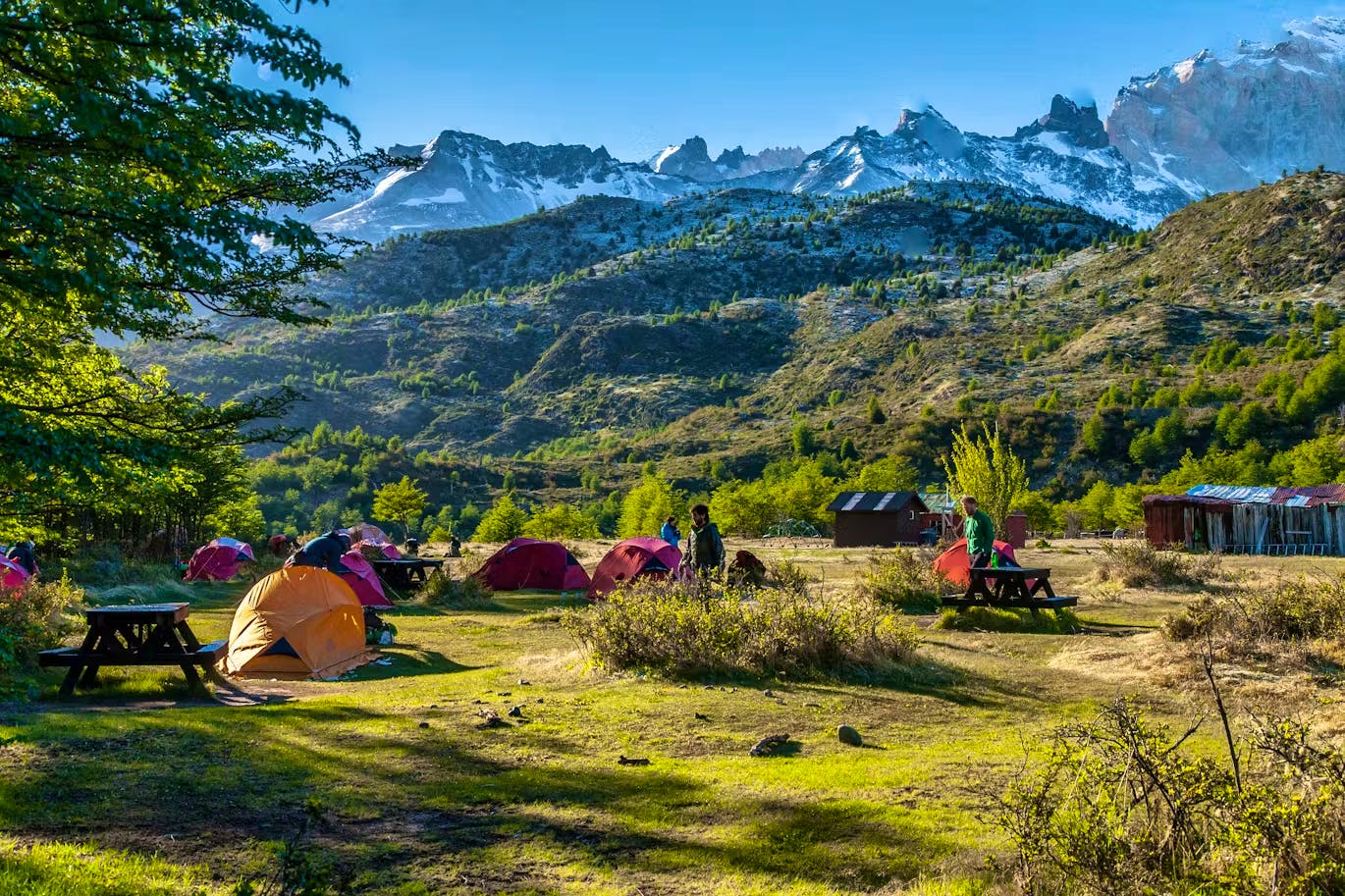
a) Weather and Trail Conditions
Summer temperatures in Torres del Paine range from the mid-50s to the low 70s Fahrenheit (10-21°C), which are ideal conditions for extended trekking.
Trail conditions during summer are generally excellent, with most routes clear of snow and mud. However, the notorious Patagonian winds pick up during this season, reaching speeds up to 120 km/h (74 mph). With that, the summer hiking days can feel chilly, so layering is essential.
Since it's the peak season, you should also come prepared for crowded trails, especially on popular routes like the W Trek and O Trek. In terms of accommodation, book early if you want to try the self-guided hiking options - refugios tend to fill up early in the summer.
b) Hiking Options
You can hike all Torres del Paine treks during summer thanks to excellent weather. But if we could pick one trail for you, it would be the iconic W Trek.
It is a multi-day adventure that spans some of the park's most iconic landscapes, including the Base de las Torres, the French Valley, and the Grey Glacier - and an easy trek that will be manageable in the hot and windy conditions. The trek also offers stunning views, opportunities for wildlife spotting, and the chance to experience the park's diverse ecosystems - from lush valleys to glaciated peaks.
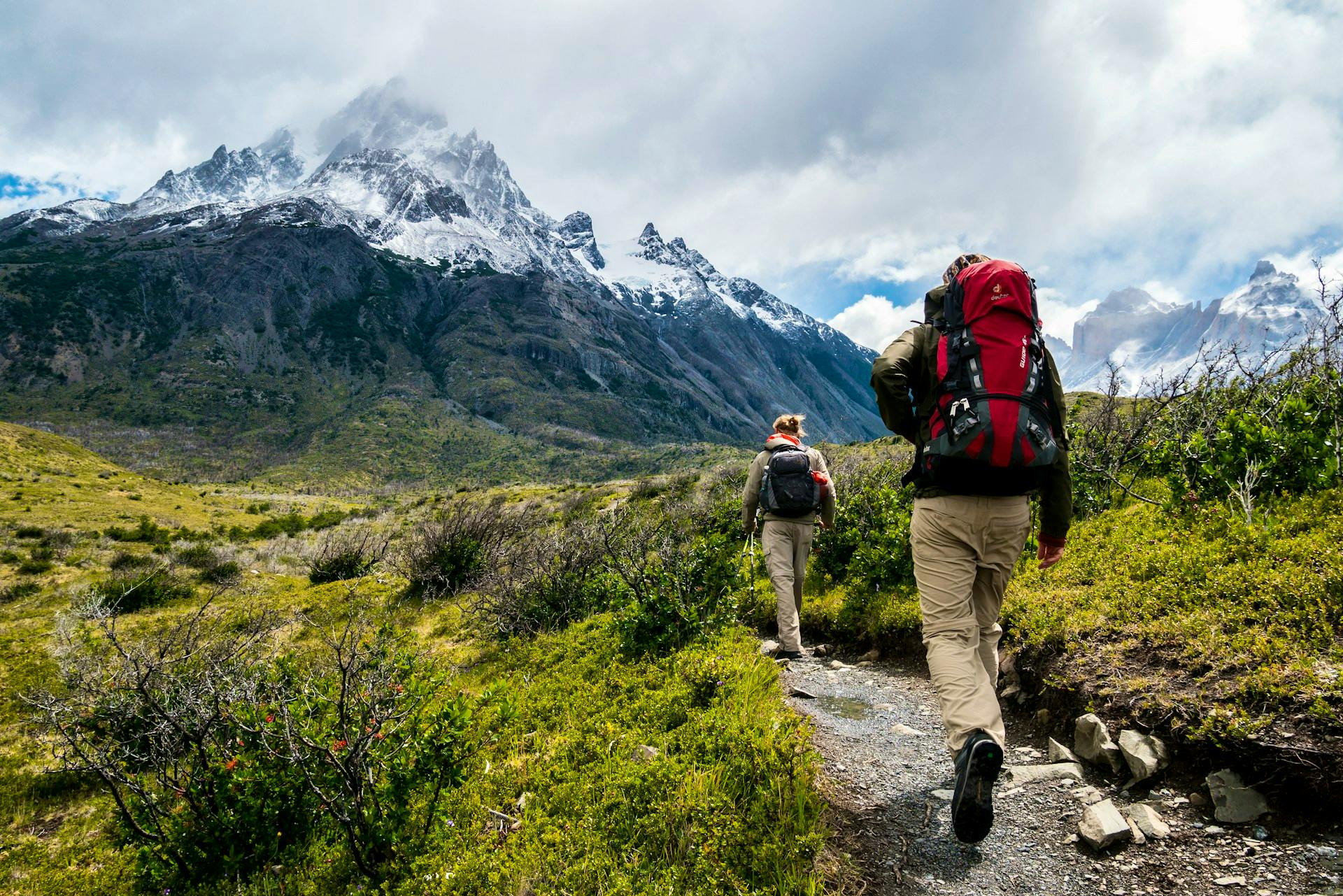

Latest Deals
c) Difficulty Level
While summer offers the most stable weather conditions, the influx of visitors can make the trails more crowded, and the long daylight hours can lead to overexertion if not properly prepared.
You should consider the intense Patagonian sun and pack plenty of water, sunscreen, and proper hiking gear. Additionally, the strong winds that pick up during summer can make hiking more challenging, especially on exposed ridges and peaks.
Fall Hiking (March to May)
As summer fades, Torres del Paine transforms into warm, golden hues, making fall a magical time to explore the park's trails. With fewer visitors and mild weather, this shoulder season offers a serene and peaceful hiking experience.
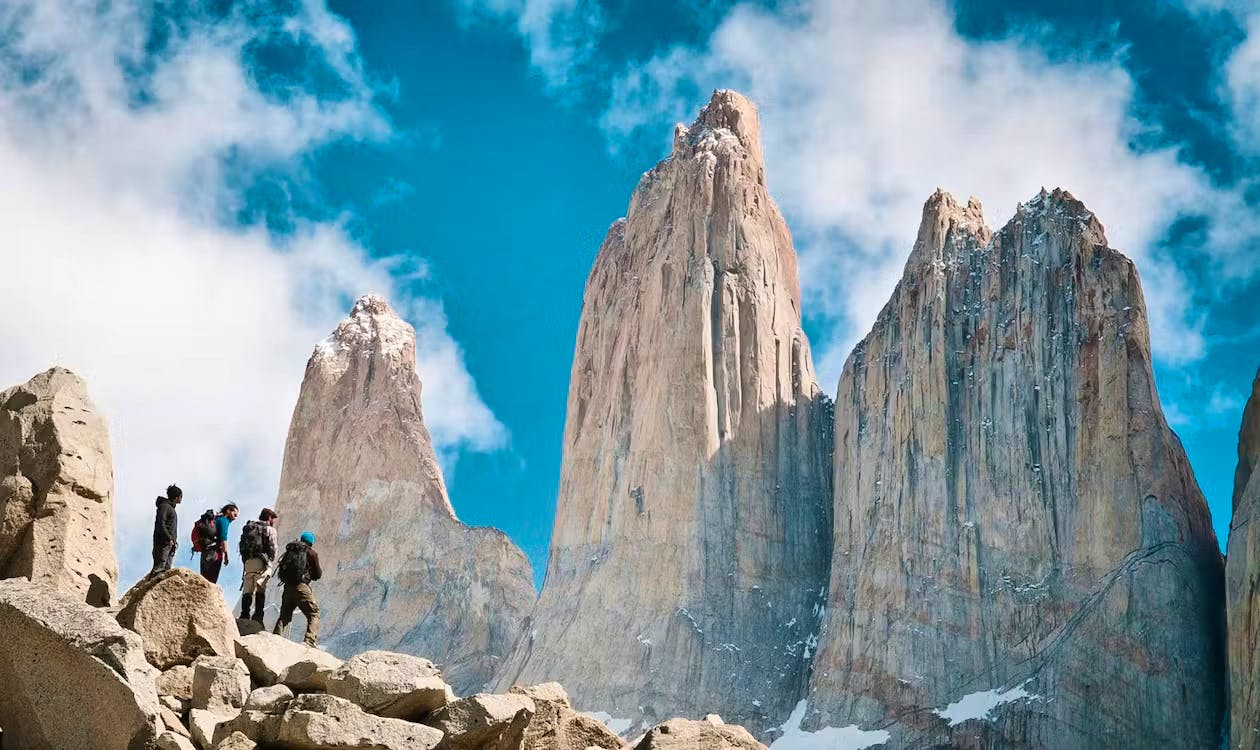
a) Weather and Trail Conditions
In Torres del Paine, the fall or autumn season features mild temperatures from the mid-40s to the low 60s Fahrenheit (7-15°C).
While the weather is generally stable, sudden rain showers and strong winds are not uncommon, so prepare with proper rain gear and layers.
Torres del Paine trails have little snow in the fall, but you might encounter muddy sections.
b) Hiking Options
With the nice weather and potential for fewer crowds, fall is a good season for a multi-day Torres del Paine trek. For this reason, the O trek is the best adventure.
The trail circumnavigates the Torres del Paine region and takes you to the Paine Massif. It is a challenging trek, especially since it takes at least seven days to complete - while carrying your O trek gear yourself.
But, if you get there on a rainy day and don't want to test the conditions in the wild, you can try alternative Torres del Paine day hikes.

The Mirador Cuernos trek, for instance, offers stunning views of the park's iconic horned peaks and the turquoise waters of Lake Nordenskjöld. This moderate 6-hour hike provides the opportunity to witness the park's vibrant autumn foliage.
Alternatively, the short Ascencio Valley trek is a photographer's dream, with golden hues, abundant wildflowers, and cascading waterfalls.

Latest Deals
c) Difficulty Level
Fall hiking in Torres del Paine is generally moderate in difficulty, with well-maintained trails and fewer crowds.
However, prepare for sudden weather changes and pack appropriate gear, including rain jackets, warm layers, and sturdy hiking boots with good traction for navigating any muddy or slippery sections of the trail.
Spring Hiking (September to November)
This transitional season is ideal if you want fewer crowds and a chance to witness nature's awakening after winter.
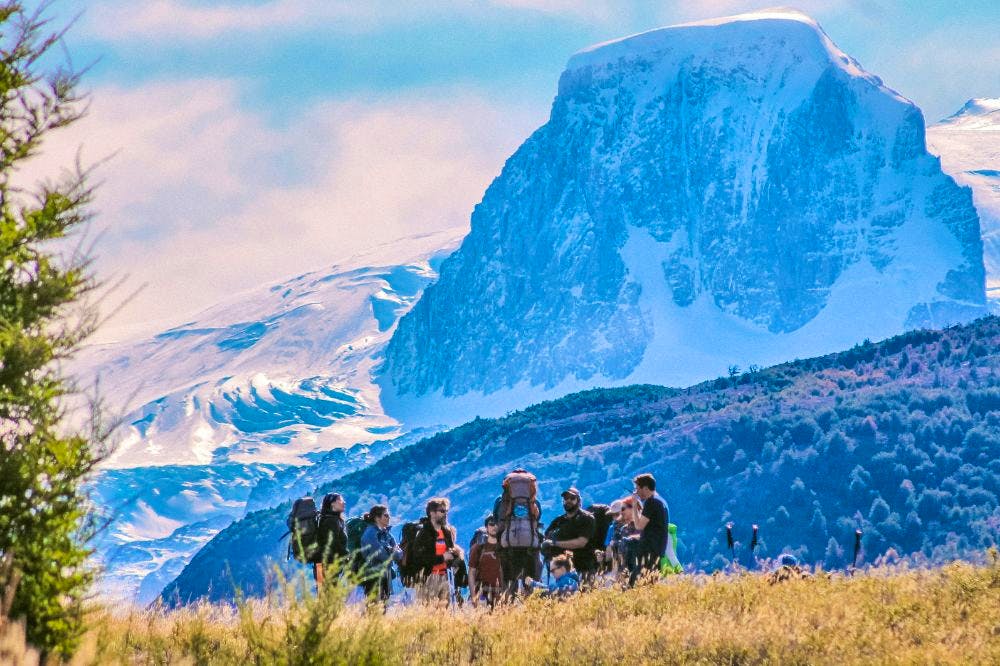
a) Weather and Trail Conditions
The Torres del Paine region features mild Spring temperatures, ranging from the mid-40s to low 60s Fahrenheit (7-15°C).
Still, the weather can be unpredictable, with sudden shifts from sunny skies to blustery winds and rain showers.
The trail conditions during this time can also be a mixed bag, with some areas still covered in snow while others are lush and verdant. Come prepared for muddy, slippery trails and potential stream crossings as the snowmelt feeds into the park's waterways.
b) Hiking Options
Spring is a good time for short treks, especially if you go hiking early in the season. For instance, you can hike the Base de las Torres, a strenuous 8-hour hike to the base of the park's iconic granite towers, and enjoy breathtaking views of the towering spires.
But as the season progresses, you can embark on the longer multi-day treks like the O and W circuits.
Spring is also an ideal time for wildlife watching as the park's resident guanacos, Andean condors, and other creatures become more active.


Latest Deals
c) Difficulty Level
While spring offers milder temperatures, the unpredictable weather and variable trail conditions can make hiking more challenging.
You want to be prepared for sudden weather changes, slippery trails, and potential snow patches, especially at higher elevations. Proper footwear, such as waterproof hiking boots with good traction, is essential for navigating muddy and uneven terrain.
Winter Hiking (May to August)
Winter blankets Torres del Paine in snow, creating a serene, otherworldly atmosphere. While hiking conditions can be harsh, this season provides adventurous souls with a unique trekking experience.
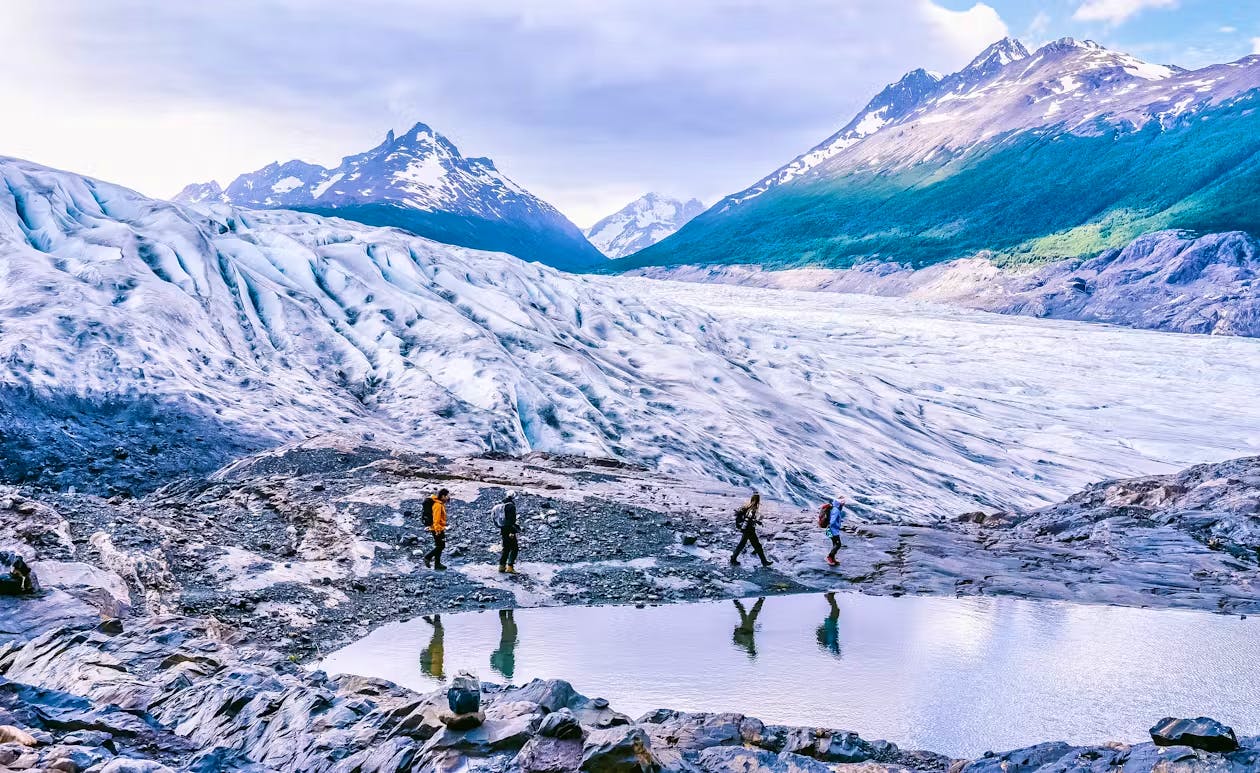
a) Weather and Trail Conditions
Winter temperatures in Torres del Paine can be brutal, often dipping well below freezing. Averages range from the low 20s to the mid-30s Fahrenheit (-5 to 2°C).
You can expect heavy snowfall, strong winds, and ice, so proper gear and ice hiking preparation are essential.
Unfortunately, many of the park's facilities and refugios are closed this season, so we recommend planning a self-sufficient Torres del Paine adventure with camping gear and survival supplies.
b) Hiking Options
During winter, you can trek most of the Torres del Paine trails, including the O and W treks. The Base de las Torres trek is also stunning with beautiful snow cover.
You can also book guided snowshoeing and cross-country skiing excursions for unique opportunities to explore the park's pristine landscapes differently.
Simply put, winter is an excellent season to venture into areas inaccessible during other seasons.
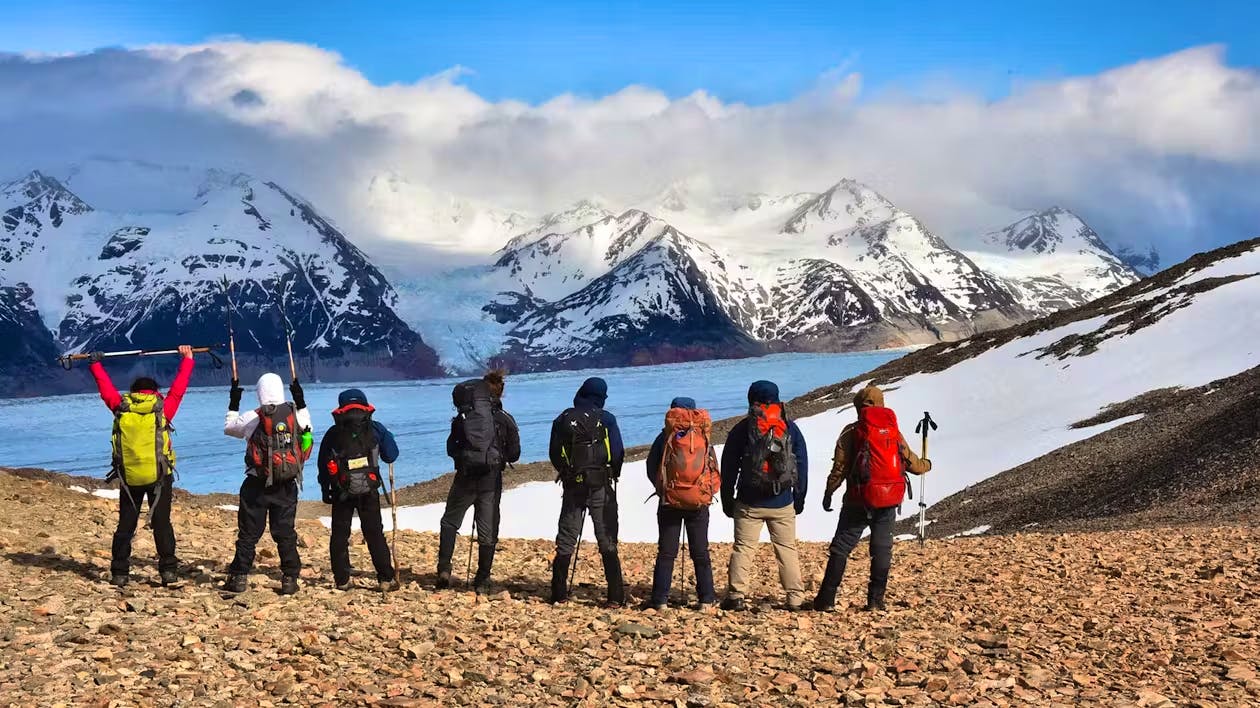

Latest Deals
c) Difficulty Level
Winter hiking in Torres del Paine is hugely challenging, and you should only attempt it if you understand ice climbing techniques, such as crampon use and self-arrest.
In addition to the extreme cold and icy conditions, limited access to shelter and resources makes winter treks highly physically and mentally demanding.
So, come equipped with proper cold-weather gear, including insulated boots, moisture-wicking layers, and a reliable tent and sleeping system for overnight camping.
Wrapping Up
While summer is the best time to hike Torres del Paine, you can still visit during the fall, winter, or spring.
All you need is adequate preparation - including checking the weather forecast to pack for your trip. With enough information, you can hike in any season and choose between several day treks or one multi-day hike around the park.
The weather may change at a moment's notice in any season. Still, one thing remains constant in Torres del Paine - the opportunity for awe-inspiring hiking adventures, from colourful blooms to frosted vistas and beautiful Patagonia wildlife.
We hope our guide will help you prepare for an epic season of scenic trails. Happy trekking!
Find your next adventure
Why Skyhook?
Join over 27,000 Skyhook adventurers who've used our platform to book directly with our vetted local guides, at local prices (we never markup).
Expert Local Guides
Experienced local guides, handpicked by us.
Best Prices
Never pay a markup on the local guide's price.
Exclusive Club
Earn loyalty rewards every time you travel.
Great Social Vibes
Small group tours provide a richer experience.
Stellar Feedback
Over 2,800 reviews, average of 4.9/5 stars.












